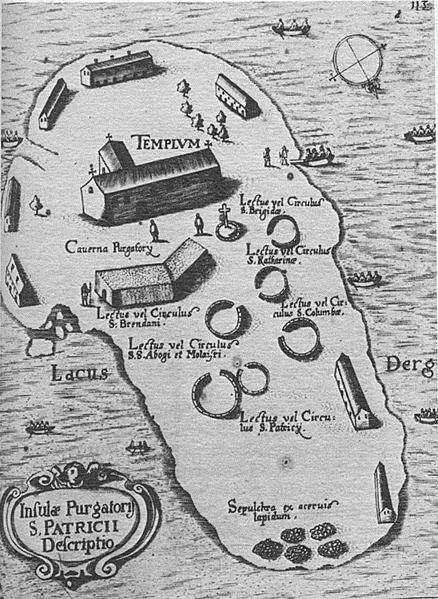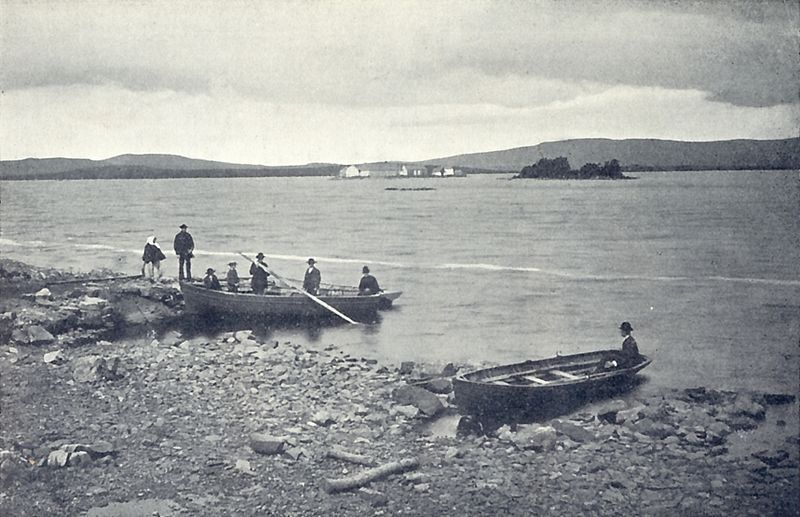Lough Derg (from Irish Loch Deirgeirt,
meaning "loch of the red eye") is a lake in
County Donegal, Republic of Ireland near the
border with Northern Ireland. It is the
second-largest lake (or lough) in Ireland
and is the third-largest in the whole
island. It is best known for St Patrick's
Purgatory, a site of pilgrimage on Station
Island in the lake.

Map of Station Island, Lough Derg, County
Donegal, Ireland - 1666
According to legend, the site dates from the
fifth century, when Christ showed Saint
Patrick a cave, sometimes referred to as a
pit or a well, on Station Island that was an
entrance to hell. Legend maintains that St.
Patrick had grown discouraged by the doubts
of his potential converts, who told him they
would not believe his teachings until they
had substantial proof. St. Patrick prayed
that God would help him relate the Word of
God and convert the Irish people, and in
return, God revealed to him a pit in the
ground, which he called Purgatory; by
showing this place to the people, they would
believe all that he said. By witnessing
Purgatory, the people would finally know the
reality of the joys of heaven and the
torments of hell.
Although the cave has been closed since
1632, several descriptions by early pilgrims
survive. They referred to it as a cave or
cellar or as an enclosed pit. The entrance,
which was kept closed and locked, was quite
narrow: about 2 ft. wide and 3 ft. high.
Once inside there was a short descent of
about six steps. The cave was divided into
two parts: the first was about 9 ft. long,
probably with banked sides and only high
enough to kneel in; after a turn there was
another niche about 5 ft. long.
A
monastery probably existed on the islands in
Lough Derg from the fifth century and it
probably included anchorites who lived in
beehive cells – which may be preserved in
some form in the penitential beds that can
still be seen on Station Island.

Pilgrimages
continue even today, after almost
fifteen-hundred years. Every year the main
pilgrimage season begins in late May/early
June and ends mid-August, on the 15th, the
feast of the Assumption of Mary. It is a
three-day pilgrimage open to pilgrims of all
religions, or none, who must be at least
fifteen years of age, in good health and
able to walk and kneel unaided.



